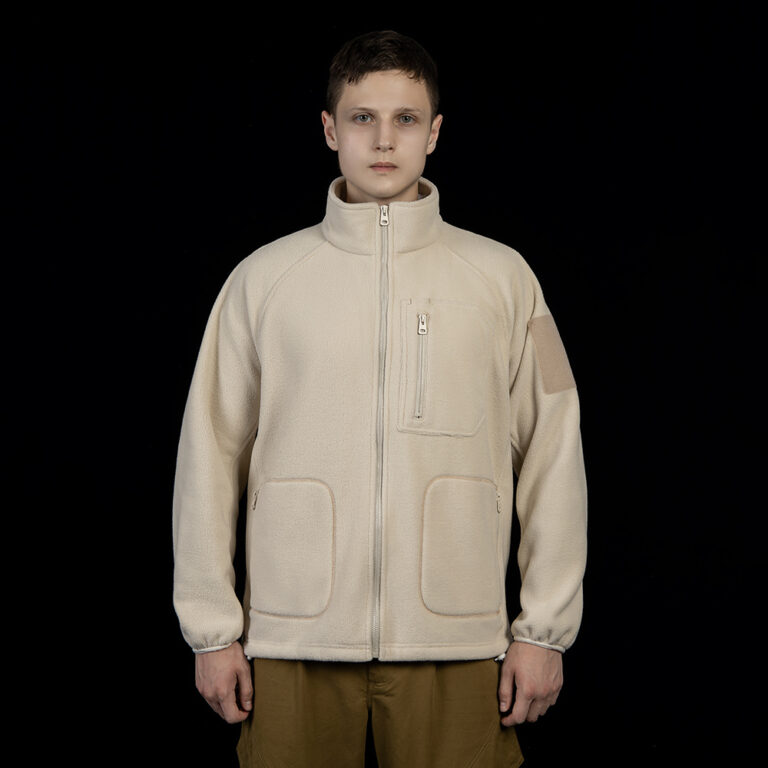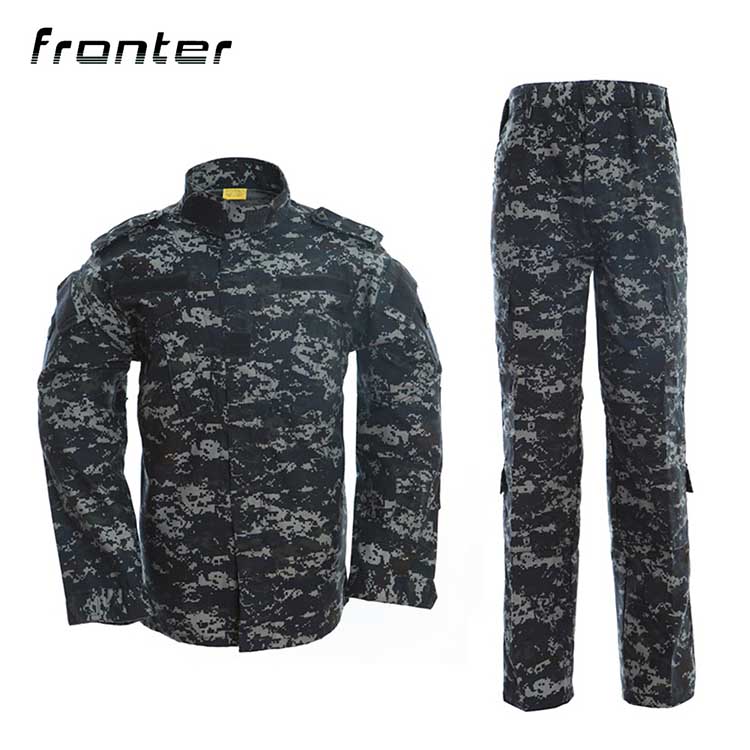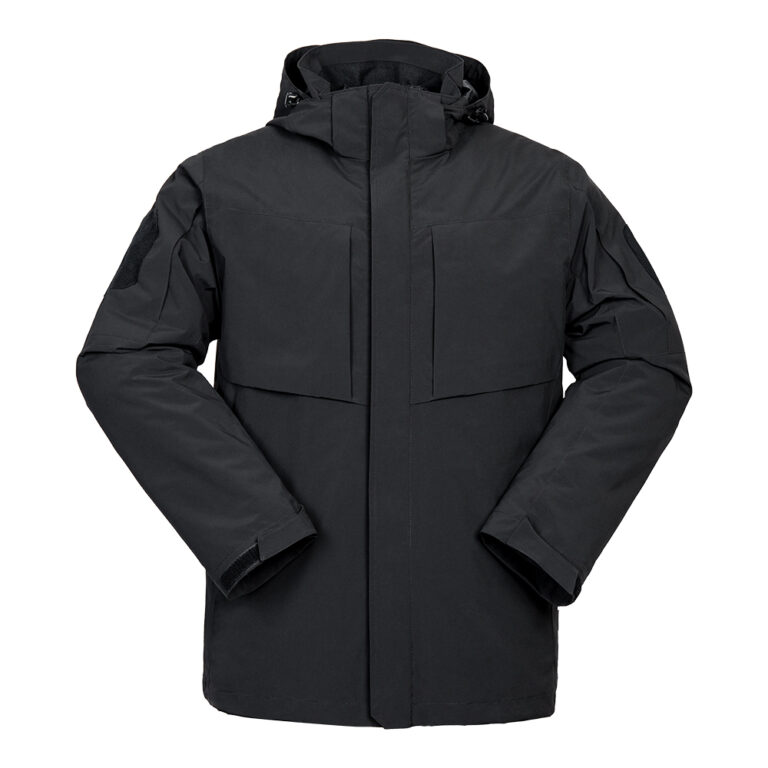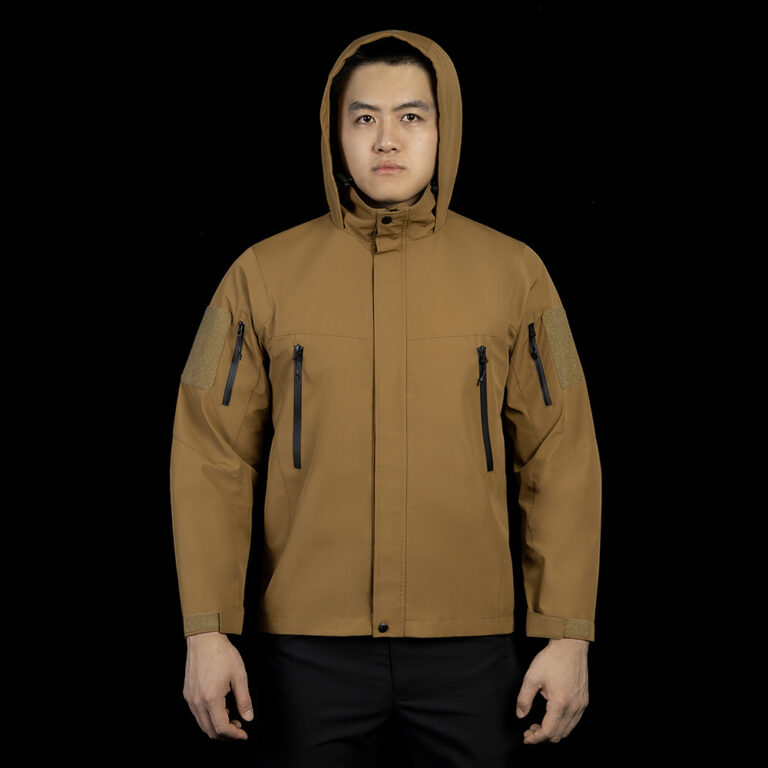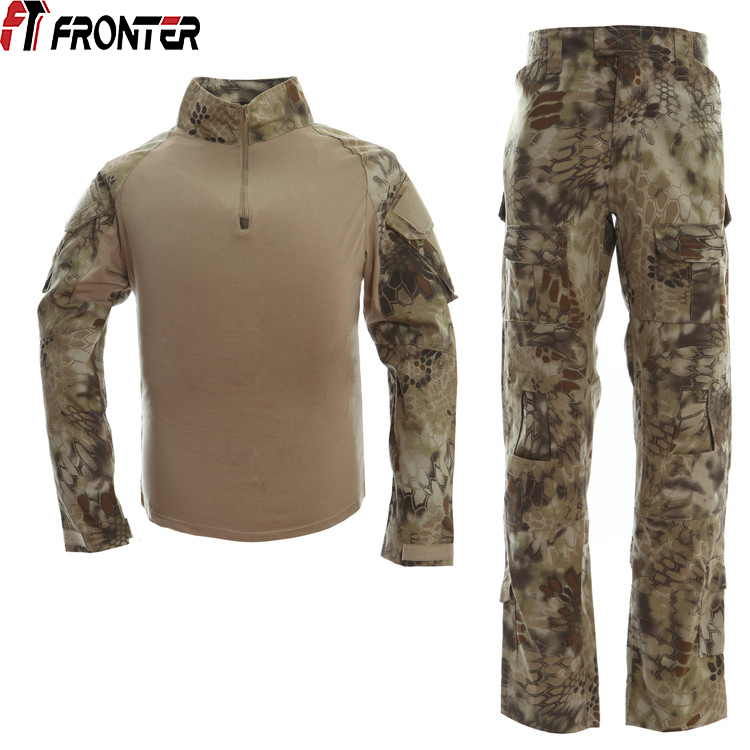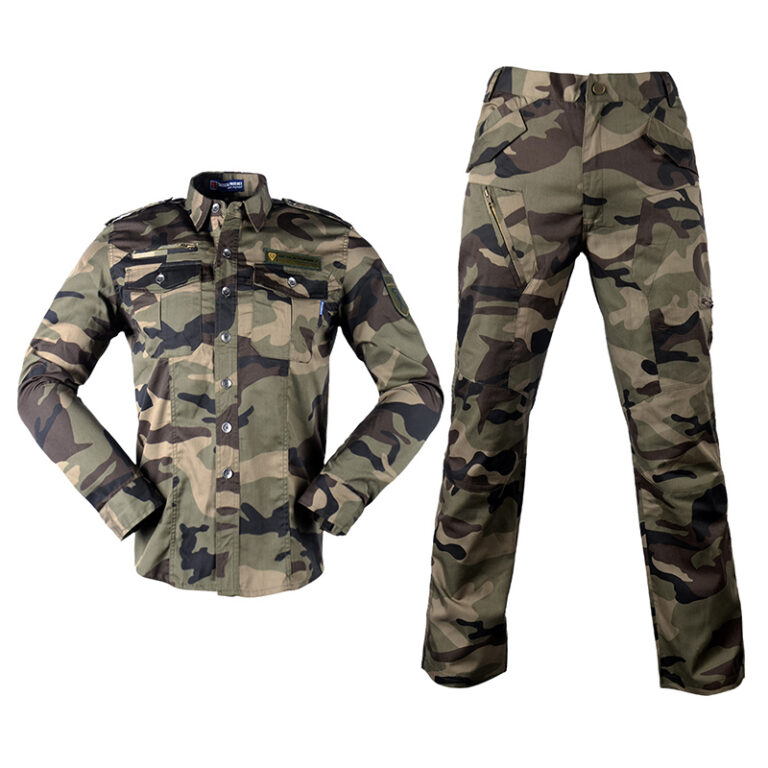
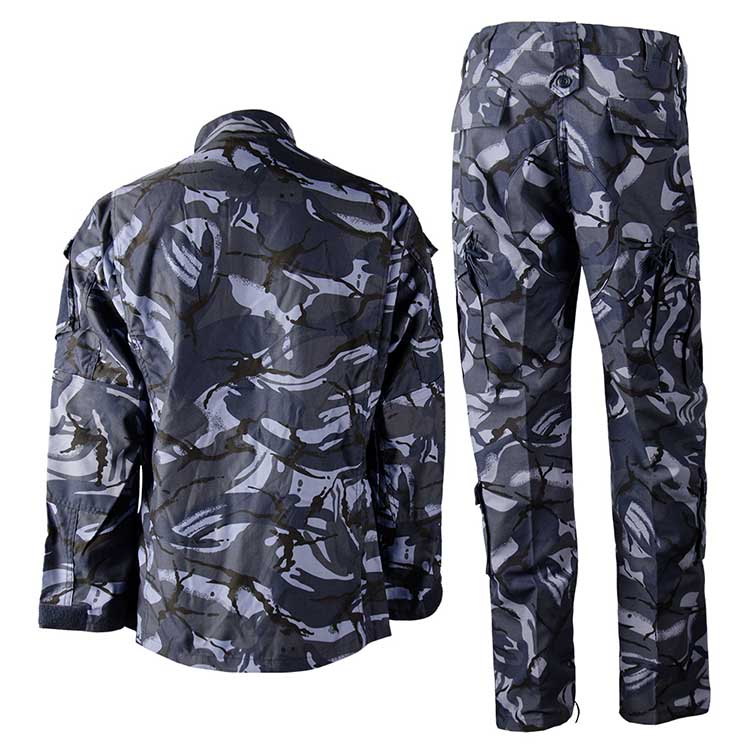
Materials:
65%Polyester + 35%Cotton
60% Cotton + 40%Polyester
50%Nylon + 50%Cotton
Fabric Type:
Ripstop / Twill
Size:
XS – XXL or customization
FEATURES:
Double layer stand-up collar with Velcro fastener
Crease on the back to increase the volume
Fly with zipper and velcro closure
Elbow / buttocks / knees are reinforced with double layer fabric
Velcro on each arm and chest for patch attachment
3 extra wide belt loops at the waist, perfect for military belt
Seamlessly Adapting to Maritime Environments
Maritime environments demand specialized attire, and the British Army Marine Camouflage Uniform-Customized meets that need. Its design incorporates shades and patterns that help soldiers blend into naval surroundings, allowing for effective operations at sea.
british military dress uniforms,army navy uniforms,marine corps bravo uniform
What camo does the British Marines use?
The new NATO procured uniform, or rig in Marine parlance, is lighter in weight, has higher tear-strength, is faster drying and is more breathable than typical cotton/nylon material. Instead of the previous multi-terrain pattern, the uniform now uses the US Crye Precision’s MultiCam camouflage pattern.
What do British Marines wear?
The Full Dress dates from 1923 and consists of a royal blue single-breasted tunic with red facings (with gold piping) and yellow cuff slashes. Royal blue trousers with a scarlet stripe and a white pith helmet are also worn. The uniform of the drum major features hussar style braiding across the front of the tunic.
Why do some Royal Marines wear blue berets?
But since the training of all Marines as commandos, recruits are issued with the blue beret and flash on joining. The only other cap badges worn since 1923 were officers’ full dress collar badges, worn in World War II on green berets of officers of 41 RM Commando, and the bands’ badges described below.
Why do some Royal Marines wear red sashes?
The red sash is worn over the right shoulder . The red sash is worn by many members of the British army but was originally worn by an Infantry Soldier in battle who was in charge of holding the regimental colours together with a junior officer (ensign) which then acted as a rallying point in the confusion of battle.

